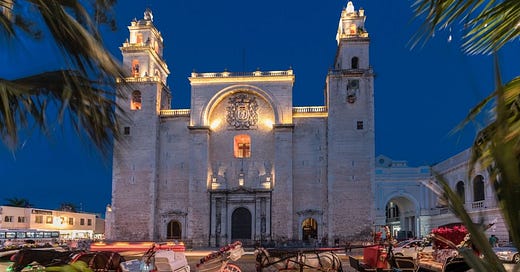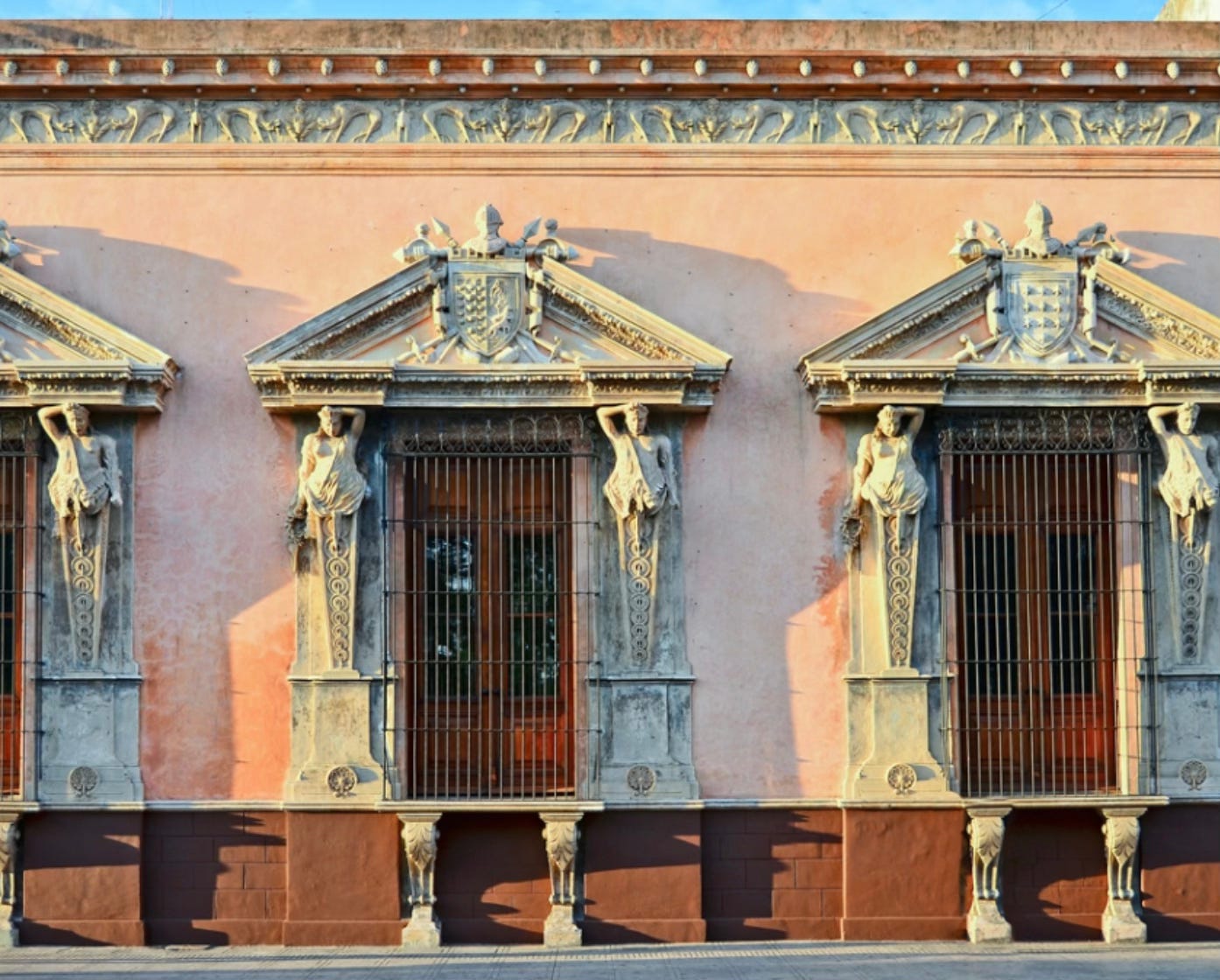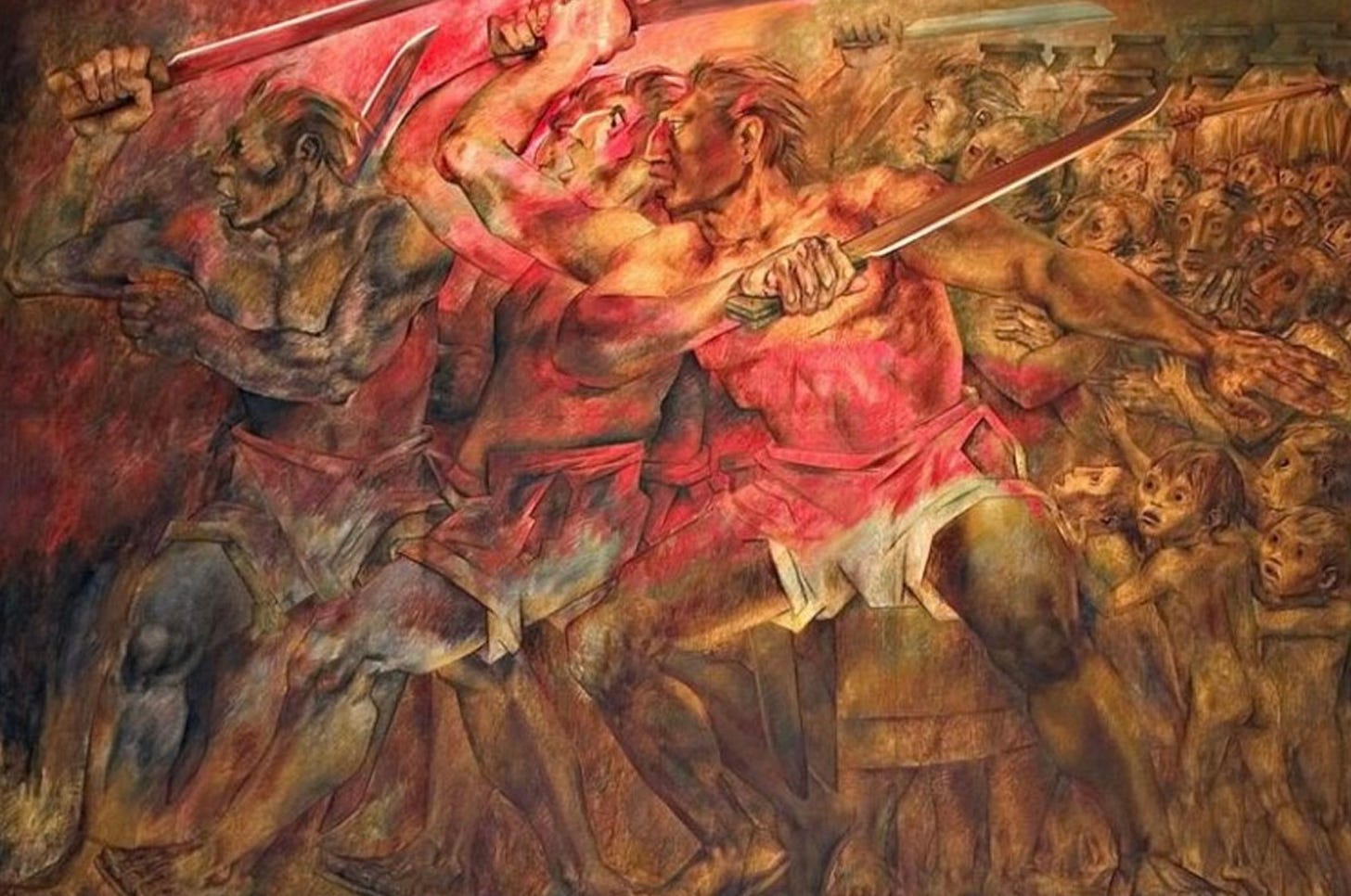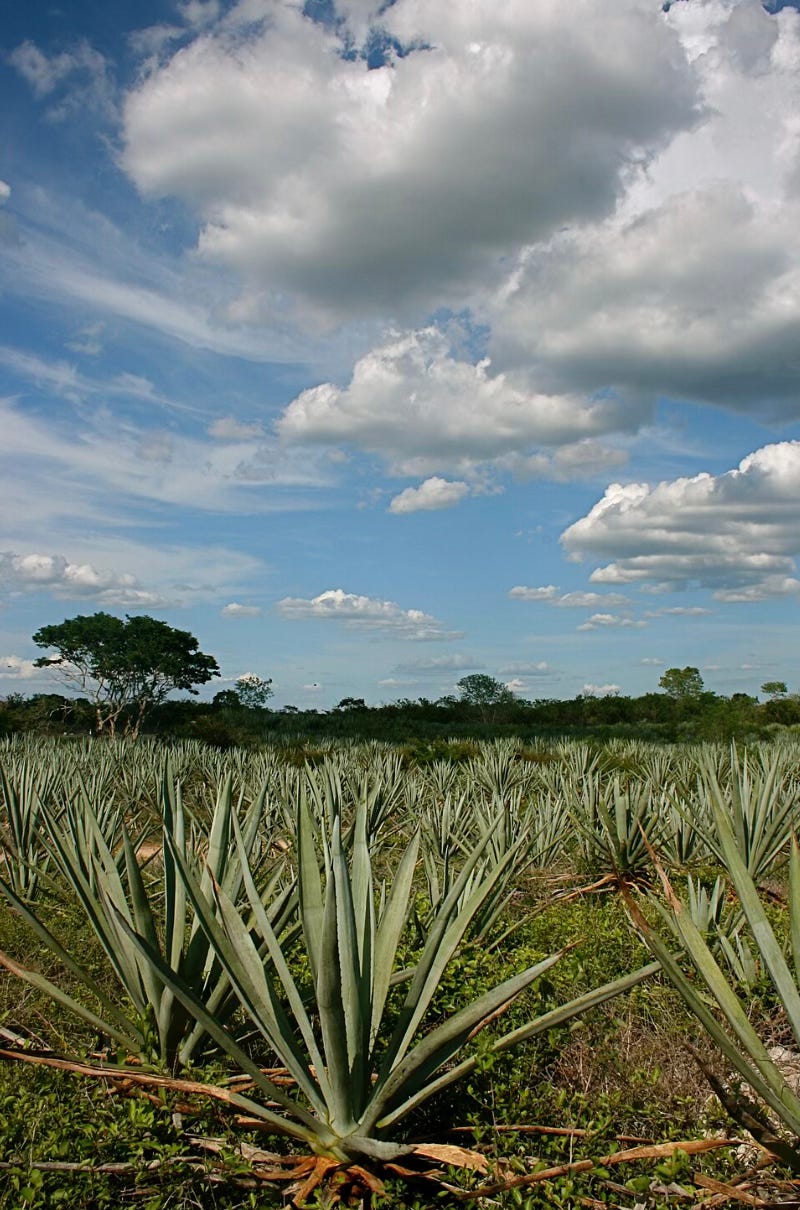Magnificent Merida, Matronly Madam of the Yucatán
The colonial city was once home to the greatest concentration of wealth in the world
Hola Amigos! Merida is like an old friend to me—so much good to tell that I’ve written about her more than once. Over the years she’s had highs and lows and always bounces back. The cadence and poise of this city remains timeless. I call her “The City of Light.” Bienvenidos á Merida!
As a longtime resident of the Riviera Maya, it's easy to be lulled into thinking that Mexico is a mirror-image of its well-heeled neighbor to the north. Just take a look at Cancun's elegant high-rise hotels, chain restaurants, and shopping malls. Blink and it's easy to think you're not in Mexico after all.
But a three hour drive by superhighway due west of Cancun to the colonial city Merida shatters all illusion that any similarities exist between Cancun and what I call real Mexico.
Sprawling metropolis
Entering Merida's sprawling metropolis, grand old houses painted in dusky tones of rouge, ochre, terra cotta, sit rigidly upright on narrow one-way streets teaming with life. City parks dominated by spreading almendron trees are filled with locals chatting, sitting, working at selling sodas and snacks or shining shoes on the corner.
Although mornings start slowly here, by midday throngs of people crowd the sidewalks, sometimes four-deep with passers-by. At 5 feet, 4 inches, I tower over everyone I encounter. The tranquil dignity of the indigenous Maya is everywhere.
High temps
If Paris is the City of Lights, then Merida, tenth oldest city in Mexico, is the City of Light, where on sunny days (the norm) temps can run to 45 degrees Celsius in the summer, 113 Fahrenheit, and tip the mercury for me at 40 degrees Celsius, 104 Fahrenheit, in May.
As I walked several blocks from my hotel to Plaza Grande, the main square, a must-see in any Merida itinerary, I hug the shady side of the street as the locals do, hoping for some relief from the merciless sun.
Colonial architecture
Downtown Merida brims with Spanish colonial architecture and is protected by some of the most rigid preservation regulations in Mexico. Founded in 1542 by Spanish conquistador Francisco de Montejo who left his indelible mark here, (though not kindly), one historic city block, the Plaza de la Independencia, on Calles 60, 61, 62, 63, crams in more 16th century architectural wonders than can be imagined.
Montejo’s former palace, Casa de Montejo, sits on the south side of the plaza, the exact spot where the former ceremonial center of the post classic Maya city, Th’o, stood. Montejo ordered the temple destroyed and used the ancient stones for the building of his lavish home which, originally converted to a bank, is now a museum.
The Palacio Municipal (City Hall) on Calle 62 stands on the plaza’s west side. Built in the 1850s, it still serves as government offices. The north side is home to the restored Governors Palace which serves as executive headquarters for the Yucatán. Walk past imposing military guards into an enormous tiled courtyard which yields 27 massive murals (4 meters by 12.6 meters) painted by Yucatán’s famous artist, Fernando Castro Pacheco. In (usually) muted earth tones these imposing paintings tell the story of the Yucatán. The courtyard is usually uncrowded plus it’s cooler than the shade of the trees outside and a nice respite from the Yucatán heat.
Catty-corner to the Palacio Municipal on the north side of the street is the oldest church in Mexico, Catedral de San Idelfonso. Construction began in 1561 and the church was designed in Renaissance style. Wander into its cool, damp darkness and gaze at the modest wooden altar and simple wood benches.
On the sides of the aisles grave markers display the names of the faithful on cements stones, polished smooth by years of wear. Set far back from the street the cathedral’s presence looms large on the square and the bell tower chimes loudly and languidly on the hour.
Green gold
Although most of Mexico's colonial cities are located in central Mexico and owe their heritage to the mining of silver, copper, gold, Merida gained its wealth not from a mineral source but from the green gold of henequen, also known as agave.
Merida exploded in the late 1800s, so great was the need for henequen which was snapped up to make Panama hats and rope. This demand spawned the growth of over 300 haciendas where agave was grown and processed. Many haciendas were owned and managed by French immigrants who built Victorian style mansions on Pasejo de Montejo, Merida's grand old tree-lined boulevard, where the clip clop of horses' hooves can still be heard today, pulling carriages (calesas) that charm many a tourist.
New wave of migration
Immigrants still swarm to Merida but today they're a different breed: both digital nomads, attracted to the city’s fast internet and lifestyle, and baby boomers from the U.S. and Canada, who are attracted not only to Merida's colonial charms but to the affordable prices found in Mexico's interior. And who can blame them? The city has much to offer.
A proud dignity permeates throughout the state, and you sense a difference as soon as you cross the state line from Quintana Roo into Yucatán. Not only in the smooth new asphalt roads and the absence of litter, but in the apparent pride when you ask someone if they're from Merida. "Soy Yucateco," (I am Yucatecan) serves as a motto as much as a birthright.
Merida á Domingo
On Sundays, Merida hosts a fair on the Plaza Grande with streets blocked off to traffic, including historic Paseo de Montejo. Every type of Yucatecan product can be found. Embroidered dresses and Mayan huipiles, guayabera shirts, wood and stone carvings, silver jewelry, Talavera pottery, handmade tablecloths, hand-strung hammocks from nearby pueblos. Roving mariachi bands wander by strumming familiar Mexican ballads, and oftentimes seating will be set up for hundreds of people for some city celebration, complete with 30-foot scaffolding to hold gigantic speakers which will be put to good use.
While enjoying Merida á Domingo as the Sunday celebration is known, wander over to popular Parque Hidalgo (Calle 59 at 60) where hoards of food vendors and more artisans crowd this popular square. In front of the historic Gran Hotel, the city's oldest, a stage is set up for singers, comics, clowns and mimes who entertain the large group of locals who attend the Sunday activities.
By day vendors sell handicrafts, toys and balloons, and at night young lovers drift out of the shadows for a romantic rendezvous. Here, the world truly is a stage, and Merida is truly Mexico. Merida is like an elegant society matron known for her unerring social graces, a breed apart. She never stops, she never loses her dignity, and she never fails to charm.
And if you’re interested in supporting independent journalism and writing, please consider a paid subscription to Mexico Soul. This is a free newsletter. I don’t paywall any of my posts, but you can choose to pay if you like what I deliver. It would mean the world to me and will keep you up to date on my posts and chapters from Where the Sky is Born—how we bought land and built a house in a small fishing village on the Mexico Caribbean coast. Not to mention a bookstore, too! All for $5/monthly or $50 per year.
If you enjoyed this article, please remember to hit the heart button to like it.
MY BACKSTORY—Puerto Morelos sits 100 miles from four major pyramid sites: Chichen Itza, Coba, Tulum and Ek Balam. Living in close proximity to this Maya wonderland made it easy to pyramid hop on our days off from Alma Libre Libros, the bookstore we founded in 1997. Owning a bookstore made it easy to order every possible book I could find on the Maya and their culture, the pyramids and the archeologists who dug at these sites and the scholars who wrote about them. I became a self-taught Mayaphile and eventually website publishers, Mexican newspapers and magazines, even guidebooks asked me to write for them about the Maya and Mexico. I’m still enthralled by the culture and history and glad there’s always new news emerging for me to report on right here on Mexico Soul.















Thanks for the restack @Gretchen | Adventure Travel
Appreciate the restack Daniel!